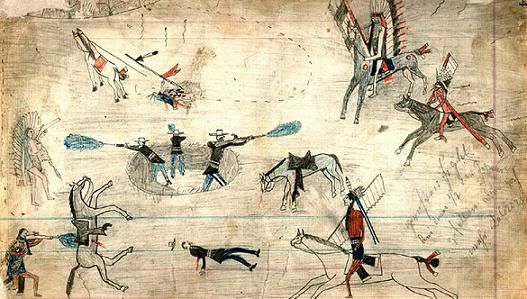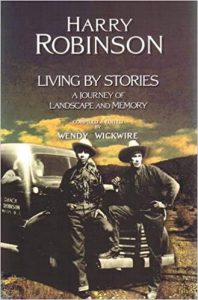For this assignment I will be using the last 10 pages of part 1. First off what surprised. me most about this assignment was how many allusions and references King was able to fit into 10 pages of this story. This is a novel that I would have more than a few times in order to start being comfortable with the allusions and references and what is going on. I feel that even if I read this novel 10 times there would still be references that I would miss. However, I have only read this book once and this is my best attempt of analyzing the allusions and references of the 10 last pages of section 1.
Babo recalling the “Indians’” story to Officer Jimmy Delano
This section starts off with Babo trying to recall the “Indians” story for the officer Jimmy Delano. Flick explains that the character Babo is an allusion of the character Babo in the story “Benito Cereno”. After reading a summary of the book “Benito Cereno” it was clear to see the references that King made to the character Babo in “Benito Cereno”. For example Babo in Green Grass, Running Water exclaims that her great-great-grandfather was a baber on a ship (King). And in the story “Benito Cereno” the character Babo is a barber on the ship San Dominick and the leader of a secret revolt (LitCharts). In Green Grass, Running Water Babo is a janitor of the asylum from where the “Indians” escaped and she is being asked by officer Jimmy Delano to repeat the story that the “Indians” told her and in this scene she keeps starting over, getting distracted, and forgetting the story’s details. And by comparing her to the character in “Benito Cereno” there is reason to think that she is deceiving the officer and hiding the truth. This is because in the story “Benito Cereno” Babo deceives the character Captain Almasa Delano into thinking that the racial hierarchy is normal on the ship and there’s no revolt happening(LitCharts). Furthermore, It is not a coincidence that the officer that Babo is talking to happens to have the same last name of the naive captain Amasa Delano. Therefore Babo and Officer Jimmy Delano may be a representation of the illusion of racial hierarchy as Delano feels like as an officer he is in control of Babo as she is giving him all the information about the “Indians” but most likely this is an illusion and she is holding information back. However, Flick also explains that Jimmy Delano also could be an allusion of Columbus Delano who was a “a career politician who was head of the Bureau of Indian Affairs in the administration of Ulysses S. Grant.” (Flick, 146). Flick explains that Columbus Delano was known for “[defending] the BIA against charges of mistreatment of the Indians in the Red Cloud Agency in South Dakota” (Flick146). After some research on him I also found out that he was known for “allowing millions of bison to be slaughtered in order to compel the Indians to move to and remain on their reservations” (Peoplepill) and this caused the “destruction of the Plains Indian culture, including their economy, cosmology, and religion” (Peoplepill). Overall he was known as someone who had power and was corrupt and that passed policies that exploited the Indigenous people. And I feel like this also is a representation of the officer in the book Green Grass, Running Water .
Dr. Joe Hovaugh talking about the “Indians” to Sergeant Cereno
In this scene the Sergeant Cereno is asking Dr. Joe Hovaugh the head of the asylum to tell him about the four Indians that escaped his facility. First off, Flick discusses that Sergeant Cereno is an allusion to the captain of the San Dominick Don Benito Cereno in the story “Benito Cereno”. Flick explains that early on in the story “Babo asks Sergeant Cereño “Is that [name] Italian or Spanish, or what?” (25); “What’s your first name? Let me guess. Is it Ben? That’s my boy’s name” (26).” (Flick, 146). Dr. Joe Hovaugh on the other hand is a play on words on Jehovah which is a name of God. And the first hint that King gives readers to show he is referring to this allusion is that Dr. Joe Hovaugh tells Sergeant Cereno that his great-grandfather was an evangelist and an evangelist is a person who converts others to christianity. Furthermore, we see King alluding to this reference through Dr. Joe Hovaugh hobby which is gardening, his hobby shows that he likes to control nature. In the section I am analyzing when Dr. Hovaugh is talking to Sergeant Cereno as he gets distracted by looking out the window at the grass, the elms, and the big oak and he seems discontent that they are “unusually dry” and are not doing well.
Lionel and Norma giving the four “Indians” a ride
In this next scene Norma and Lionel are driving and they “see four old Indians standing by the side of the road” (King). In this section Lionel wonders if “Cecil made it to Wounded Knee after all” (King) . Flick explains that Wounded Knee is a reference to the “ site of the last major battle of the Indian Wars” (Flick, 148). I did some more research on this and learned that the US army slaughtered around 300 Lakota Indians at the “climax of the U.S. Army’s late 19th-century [in order to] repress the Plains Indians” (Britannica). This reference really relates to the ongoing theme in the story which is stories of colonialism. Next, when Norma and Lionel see the “Indians” standing beside the road she says to Lionel “better give them a ride … they look about as lost as you” (King). I feel that this reference kind of relates to the theme of traveling, being on the road, and being lost and not knowing what direction you should go in life. And this relates to most of the characters in this novel as Alberta is having a difficult problem deciding what direction she wants to go in her life, she does not know if she wants to be with Charlie or Lionel. And Lionel also is kind of lost as he has been selling stereos and Tv’s for a long time and does not know what he wants to do with the rest of his life.
First Woman and Ahdamn go to Florida to draw pictures
In this next section here First Woman and Ahdamn are chained up on a train going to Florida. And when they get to Florida they are sitting around drawing pictures. This is an allusion to the Fort Marion Prisoners in 1874 and this is actually mentioned in the beginning of the story. Earlier on in the story Alberta is teaching a class and she discusses how In 1874 the US army attacked Southern Plain tribes and captured prisoners to send to Florida and were prisoned at Fort Marion and were provided materials to draw. The interesting thing about this illusion is I did some research on the Fort Marion Prisoners and learned that “most of the prisoners were men, [however] the group included one Cheyenne woman” (nativeamericannetroots.net). And I was curious if King was trying to represent Adhamn and the First Women as these Indigenous people who were captured and if the First Women was supposed to represent the one Cheyenne women in the group. Furthermore, In this chapter it is explained that “Ahdamn becomes a big star. People from New York and Toronto and Chicago and Edmonton come down to Florida to watch Ahdamn draw pictures” (King). And I feel that this is a reference to the Indigenous people in Fort Marion who were imprisoned being encouraged to produce works of art for sale and the drawing being sold (nativeamericannetroots.net).
Thank you for reading my blog, like I said before I probably missed some references and allusions so if you caught someones that I did not catch please let me know in the comment section!
 (nativeamericannetroots.net)
(nativeamericannetroots.net)
Admin. “The Fort Marion Prisoners.” Native American Netroots, 24 Feb. 2012, nativeamericannetroots.net/diary/1269.
Flick, Jane. “Reading Notes for Thomas King’s Green Grass, Running Water” Canadian Literature, 1999.
Hudson, Myles. “Wounded Knee Massacre.” Encyclopædia Britannica, Encyclopædia Britannica, Inc., 17 Jan. 2020, www.britannica.com/event/Wounded-Knee-Massacre.
King, Thomas. Green Grass, Running Water. HarperCollins e-Books, 2016
LitCharts. “Benito Cereno Summary.” LitCharts, www.litcharts.com/lit/benito-cereno/summary.
Melville, Herman, and Mary V. “Benito Cereno Characters.” GradeSaver, www.gradesaver.com/benito-cereno/study-guide/character-list.
PeoplePill. “Columbus Delano: American Politician (1809-1896) – Biography and Life.” PeoplePill, peoplepill.com/people/columbus-delano/.






